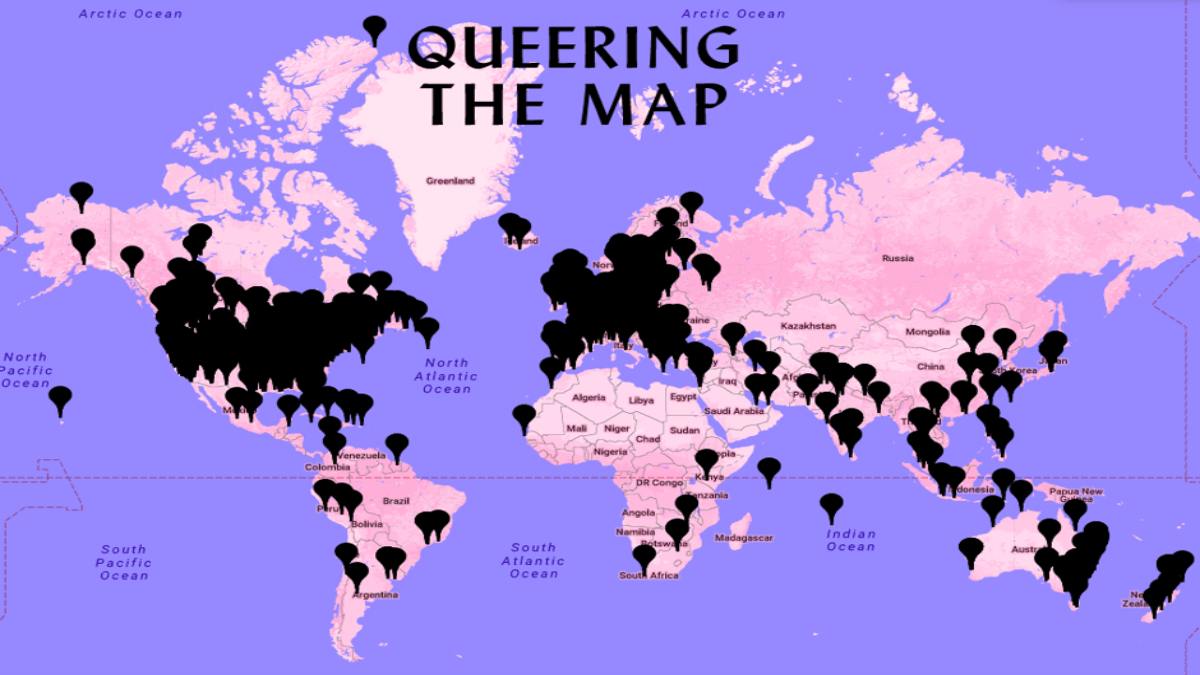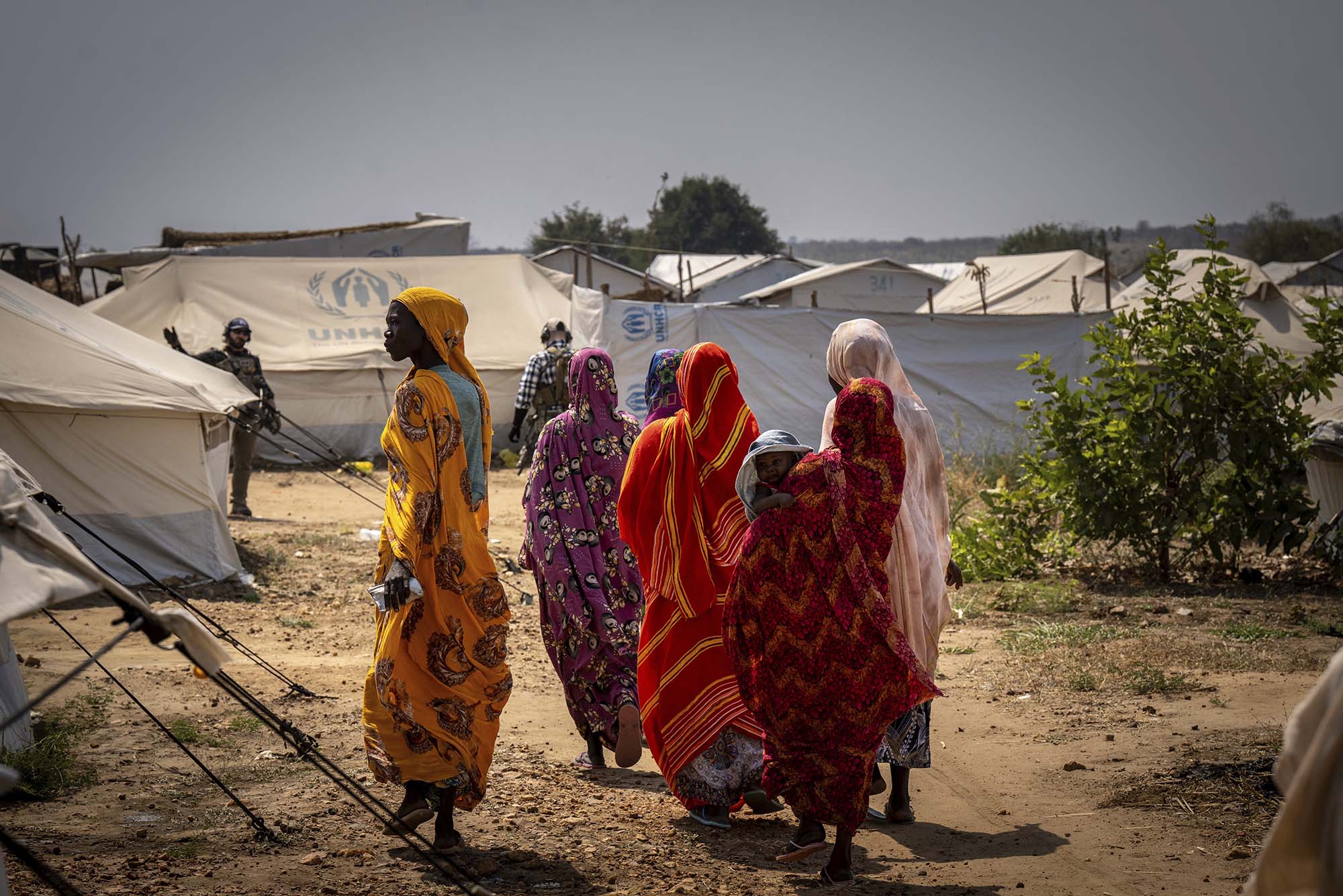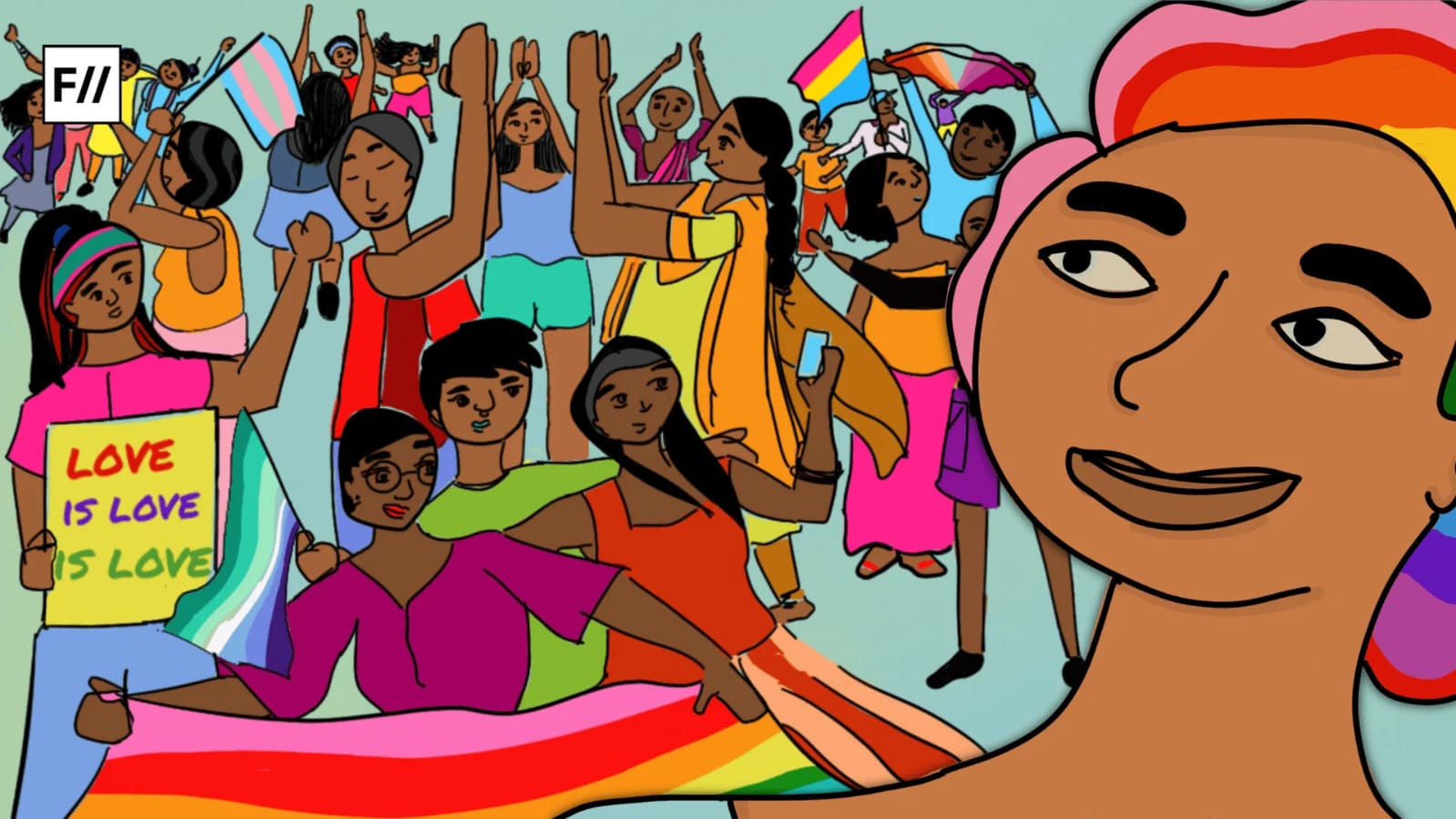As the siege and on-going violent bombardment of Palestinians in Gaza continue to unfold, in tragic and yet beautiful entries, queer Palestinians have made use of the website ‘Queering the Map’ to share their experiences. The collaborative digital platform that has been active since 2017 by Lucas LaRochelle seems to have re-emerged in response to the humanitarian crisis, where tragic queer Palestinian testimonies have been able to not only assert visibility but confront the widespread oppressive narratives aimed at separating queerness from Palestinian identity by erasing one from the other. These testimonies offer a compelling counterpoint to oppose notions of where queerness is believed to exist, and speak truth to power.
Queer Palestinian testimonies
The testimonies cover systemic harassment and blatant discrimination from Israeli occupiers and army officials, heart-breaking confessions to partners or lovers, and most importantly, the complex reconciliation of their queer and Palestinians identities that are typically presented as mutually exclusive by the Israeli homo-nationalist project. One anonymous entry impactfully recounts their search for their grandparents’ house in Palestine after their forced expulsion from the area during the 1948 Nakba and notes, ‘As a queer Palestinian, the only time I felt angry and broken about seeing a pride flag was when I saw it flying on my grandparents’ house, on my stolen land.’
The writing presents a strange and deeply deplorable dichotomy unique to the queer Palestinian experience that the readers across the world, queer and non-queer alike, can access and finally begin to comprehend
The writing presents a strange and deeply deplorable dichotomy unique to the queer Palestinian experience that the readers across the world, queer and non-queer alike, can access and finally begin to comprehend.
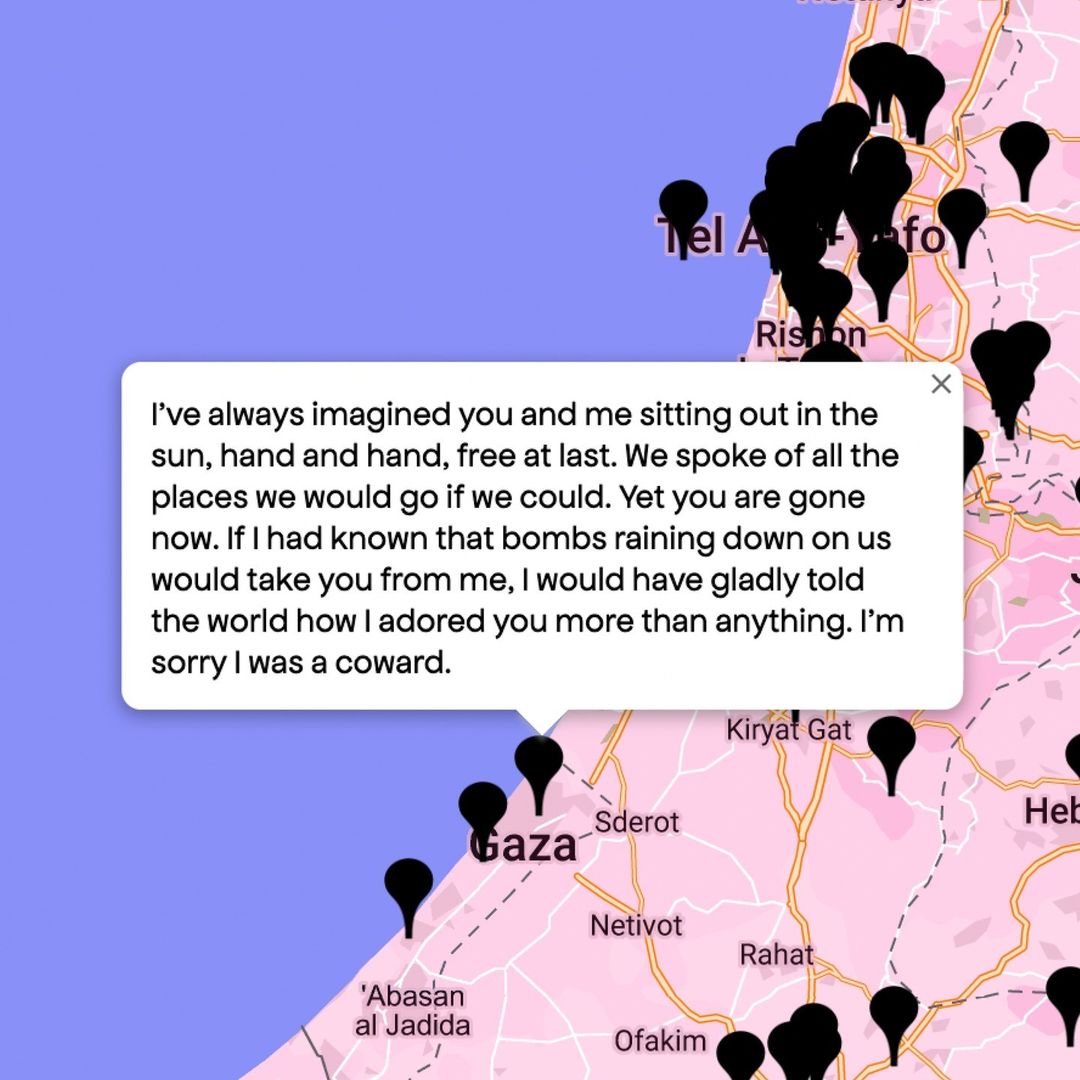
This interactive digital atlas that began as a creative project for a university class assignment has now developed into a repository of over half a million intimate thoughts and recollections from anonymous contributors worldwide. There doesn’t seem to be a fixed template to the entries as they comprise of varying languages, wordcounts, and themes including milestones, every day moments, strife, fears, hopes, and so much more. These entries are not merely historical markers of queer existence and liberation but deeply personal stories that work to redefine the fabric of queer experiences to the rest of the world.
Queerness beyond borders
LaRochelle’s intention with the platform was to archive physical spaces in which LGBTQ people may not have always been accepted, but have lived and loved nevertheless. While the project has, without a doubt, managed to succeed in its mission statement, it simultaneously serves a much larger purpose. An entry from Canberra reads, ‘touched boobs for the first time!!!!!’, and a longer, heartfelt confession from Cape Town concludes ‘I think we were meant to be together but so does every woman who has ever dated you.’
Millions of tiny black location pins spread across a screen, dense and stark against a baby pink map as if to say: ‘I’m here. I’m queer.’ One can spend hours on end on the ‘Queering The Map’ official website, simply selecting areas across the world, clicking on pins and reading testimonies, each placed on a deliciously full spectrum of emotion, right from funny to heart-breaking to romantic.
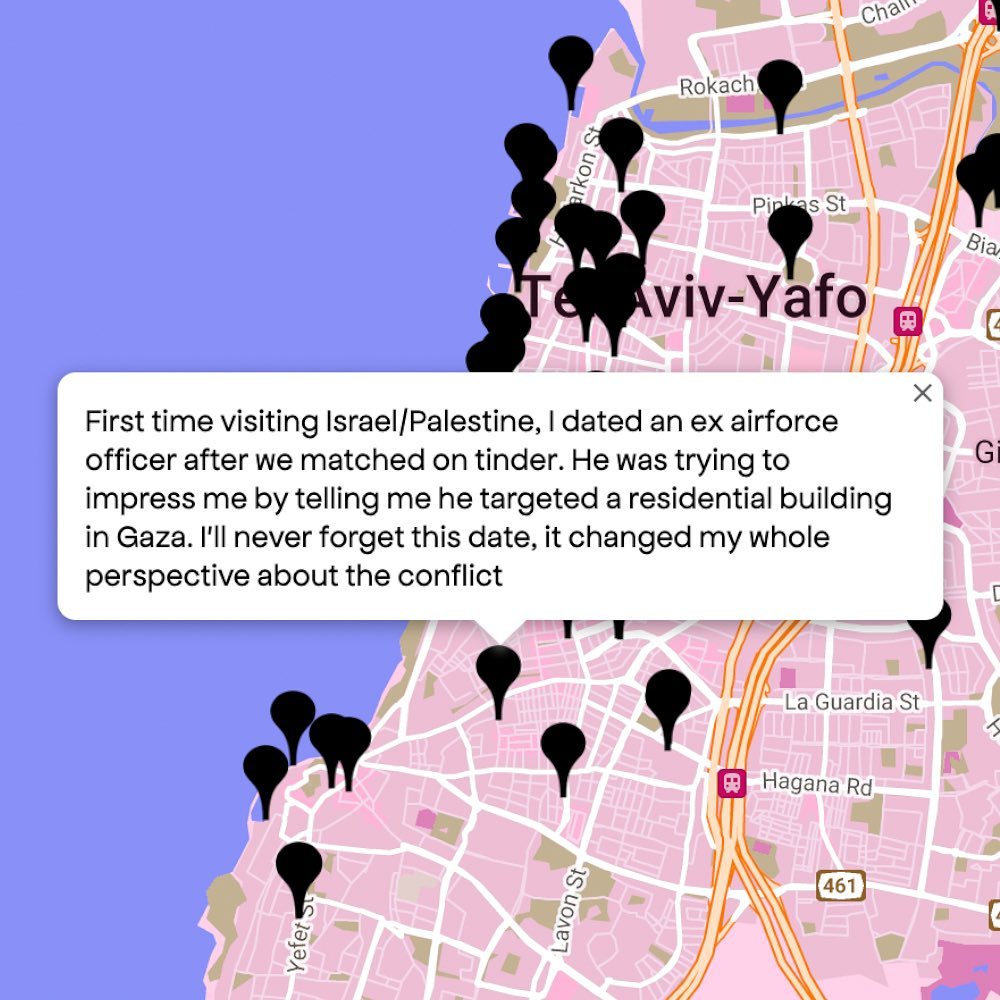
There is an evident defiance of geographical constraints that the map provides, showing how queerness exists in unexpected places and challenges the rigid attribution of queerness to very specific locations. The West has always reinforced an imagery of civility and progressiveness about themselves and backward, barbarism about the global South and this practice has made its way into queer spaces. The map, in contrast with this imagery, is filled to the brim with testimonies, from countries – particularly Islamic states – where the Western media has, on a number of occasions, explicitly claimed LGBTQ people don’t exist, as an empty, unresearched attempt at Pinkwashing.
Queer Palestinians in particular, have continued to suffer at the hand of this practice by the state of Israel, now more than ever. A post from Gaza appeared recently, ‘Pls know despite what the media says, there are gay Palestinians. We are here, we are queer. Free Palestine.’ Queering The Map has evidently provided a space in which queer people can implicitly or explicitly refute the presumptions that fail to recognise queer people beyond whiteness. Viewers and contributors are encouraged to broaden their image of queerness beyond Western countries or even urban metropolis’.

Particularly in India, where urban culture often projects itself as more progressive than suburban or rural communities in our own country, Queering The Map proudly presents an entry from Varanasi that confesses ‘i love you.’ The Western queer community, now in tandem with urban spaces across the world, seems to have curated a collection of cultural badges that when placed together, construct an unnecessary scaffolding around which all queer people are expected to arrange their identity.
The Western queer community, now in tandem with urban spaces across the world, seems to have curated a collection of cultural badges that when placed together, construct an unnecessary scaffolding around which all queer people are expected to arrange their identity.
Right from fashion elements, taste in media, and personal icons, there is a cultural capital associated with a monolithic identity by which queerness shows itself that Queering The Map can guide us out of. By reading entries from places in which it is unlikely for people to engage in these well-known queer cultural motifs, one can manoeuvre their way into an understanding that allows for a more multi-dimensional definition of queerness and allow everyone from the global community to bond over shared experiences.
Intersectional queerness
Moreover, through this archive, we may also gain insight into other dimensions of the queer experience by which queer people across the world can see not only the similarities they all bear with one another, but also the ways in which they are different. Oftentimes, we tend to overlook the role that geography – and by extension, its social factors such as race, ethnicity, country politics, religion and cultural background – can play in queer realities.

Queering The Maps has been able to conduct a valuable lesson in intersectionality, highlighting how a person’s location may have shaped their queer experience and outlook on their own identity, priorities or relationships. Especially in light of Gaza’s strife for freedom, the world is invited to look on as queer Palestinians share stories that eloquently articulate how their sexual, religious and ethnic identities and experiences are woven together to form a distinctive voice and narrative.
Beneath the myriad black pins on ‘Queering The Map’ lies a rich tapestry of queer identity still waiting to be explored. LaRochelle’s creation, initially conceived as a means of documentation, has metamorphosed into something far more profound. The digital space seems to have transcended its initial purpose, evolving into a sanctuary where intimate revelations unfurl and the complex layers that constitute the queer experience are laid bare. It beckons us to recognise and celebrate the multifaceted nature of the struggles and triumphs that shape queer lives. The act of pinning a location on ‘Queering The Map’ is a firm assertion of existence, a declaration that this space, both physical and metaphorical, is imbued with a queer narrative. LaRochelle’s creation becomes a testament to the importance of visibility, a digital proclamation that queerness persists and endures despite all that works against it.
